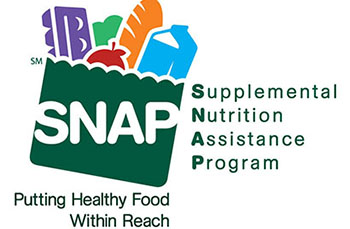By: Hannah Walker, Director of Government Relations, Food Marketing Institute

We have all heard the concerning statistics regarding the amount of food going to waste in the United States while many go without. As a founding member of the Food Waste Reduction Alliance (FWRA), FMI has been addressing the challenge of reducing food waste in both the United States and globally. FMI recently participated in an announcement with the U.S. Department of Agriculture and the Environmental Protection Agency to emphasize our commitment to the issue and highlight the importance of collaboration between government and the private sector.
I wanted to highlight an interesting and innovative case of using data to address this pressing public concern and stewardship issue. Feeding America has partnered with dozens of grocers across the country seeking creative ways to solve both the food waste and hunger problems. For years, grocers had limited options when perishables were reaching their sell-by-date; the primary one being send it to the landfill. Significant changes came in 2006 when many of FMI’s members began teaming up with Feeding America to better identify perishable food and donate it rather than discard it. This improved collaboration has proven incredibly successful; grocers have donated over 1.4 billion pounds of food between July 1, 2014 and June 30, 2015, a truly amazing increase from the 140 million first donated when the program started in 2006.
In a recent conversation with Feeding America, I learned that they have found a great willingness from our retail members from large national chains down to smaller operators—to donate perishables that will stock the shelves of the local food bank as opposed to adding to their local landfill. In one short decade, the partnership between the grocery industry and Feeding America has made perishables, such as meat, dairy, and produce much more common items on food bank shelves.
This smart and seemingly simple solution is backed by the use of data, innovation and analytics to measure what and how much food is received and where to send it so that it reaches those in the greatest need. By matching meal gap data with available resources, our local food banks are able to serve those who are in the greatest need while reducing our national food waste at the same time.
While 1.4 billion pounds is an incredible improvement from the reported 140 million reported just nine short years ago, there is always more that can be done. Feeding America and grocery partners are currently targeting an additional 300 million pounds of food they believe they can get by further optimizing the data and collection process.
There will never be one solution to solve the challenges of food waste and hunger in the United States and abroad; however, creative ideas like this partnership backed with strong data and creative innovation are making great strides toward both goals.


 Industry Topics address your specific area of expertise with resources, reports, events and more.
Industry Topics address your specific area of expertise with resources, reports, events and more.
 Our Research covers consumer behavior and retail operation benchmarks so you can make informed business decisions.
Our Research covers consumer behavior and retail operation benchmarks so you can make informed business decisions.
 Events and Education including online and in-person help you advance your food retail career.
Events and Education including online and in-person help you advance your food retail career.
 Food Safety training, resources and guidance that help you create a company food safety culture.
Food Safety training, resources and guidance that help you create a company food safety culture.
 Government Affairs work — federal and state — on the latest food industry policy, regulatory and legislative issues.
Government Affairs work — federal and state — on the latest food industry policy, regulatory and legislative issues.
 Get Involved. From industry awards to newsletters and committees, these resources help you take advantage of your membership.
Get Involved. From industry awards to newsletters and committees, these resources help you take advantage of your membership.
 Best practices, guidance documents, infographics, signage and more for the food industry on the COVID-19 pandemic.
Best practices, guidance documents, infographics, signage and more for the food industry on the COVID-19 pandemic.
